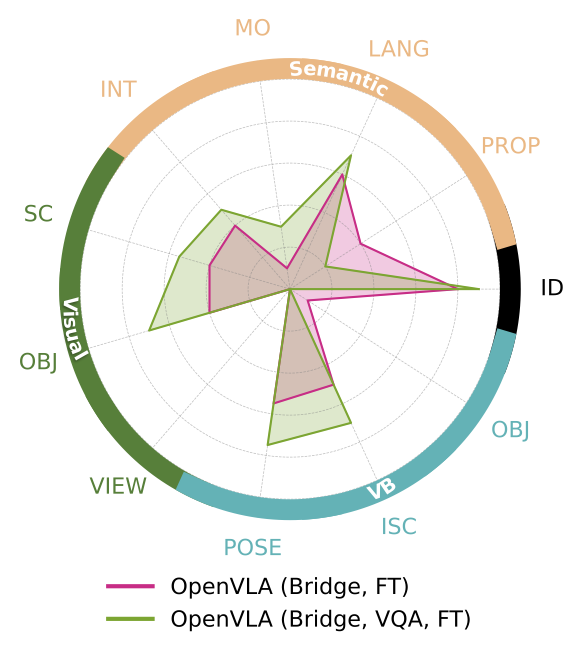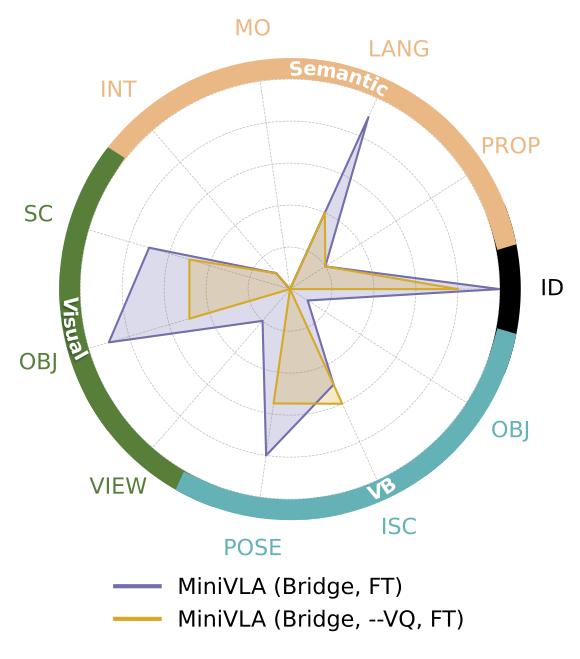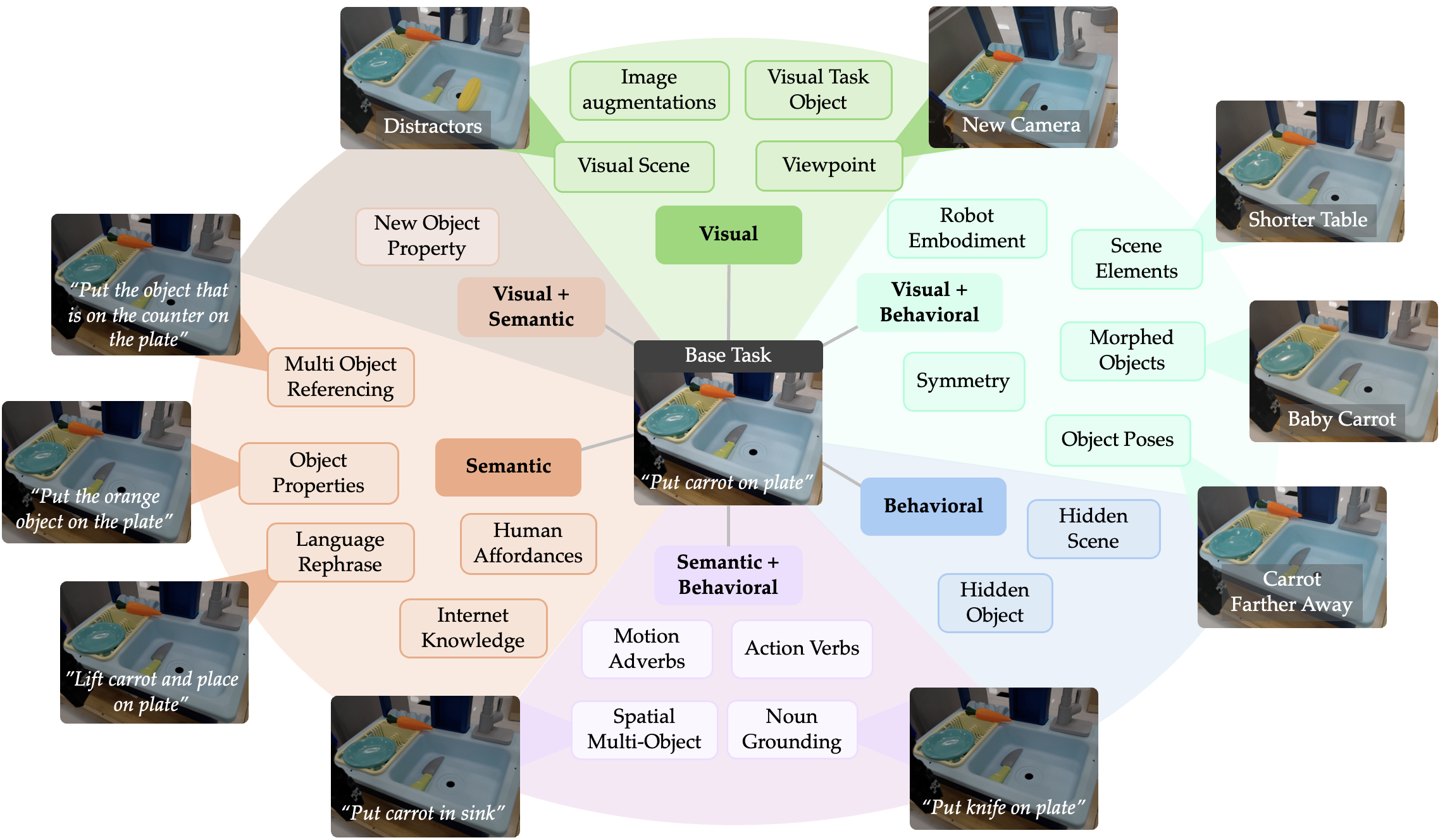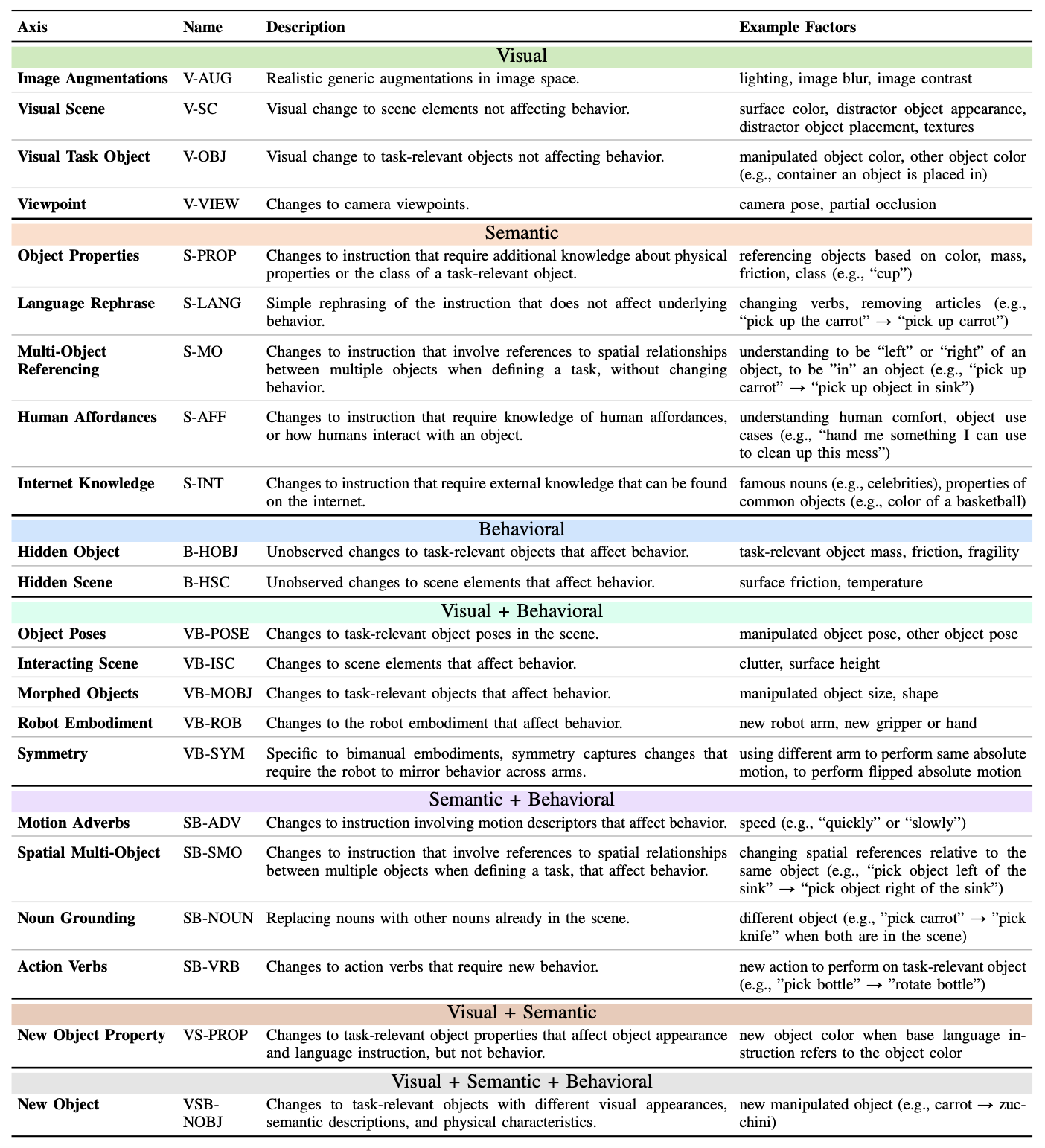A Taxonomy for Evaluating Generalist Robot Policies
Abstract
Machine learning for robotics promises to unlock generalization to novel tasks and environments. Guided by this promise, many recent works have focused on scaling up robot data collection and developing larger, more expressive policies to achieve this. But how do we measure progress towards this goal of policy generalization in practice? Evaluating and quantifying generalization is the Wild West of modern robotics, with each work proposing and measuring different types of generalization in their own, often difficult to reproduce, settings. In this work, our goal is (1) to outline the forms of generalization we believe are important in robot manipulation in a comprehensive and fine-grained manner, and (2) to provide reproducible guidelines for measuring these notions of generalization. We first propose ★-Gen, a taxonomy of generalization for robot manipulation structured around visual, semantic, and behavioral generalization. We discuss how our taxonomy encompasses most prior notions of generalization in robotics. Next, we instantiate ★-Gen with a concrete real-world benchmark based on the widely-used Bridge V2 dataset. We evaluate a variety of state-of-the-art models on this benchmark to demonstrate the utility of our taxonomy in practice. Our taxonomy of generalization can yield many interesting insights into existing models: for example, we observe that current vision-language-action models struggle with various types of semantic generalization, despite the promise of pre-training on internet-scale language datasets. We believe ★-Gen and our guidelines can improve the dissemination and evaluation of progress towards generalization in robotics, which we hope will guide model design and future data collection efforts.
Our Taxonomy: ★-Gen
Generalization in robotics can be a nebulous, ill-defined concept. We formalize generalization intuitively as perturbations relative to some base task. For visual-lingual control policies, such as vision-language-action models (VLAs), these perturbations can fall under three main types:
A given perturbation might lie at the intersection of one or more of these types. For example, changing the location of a carrot in the task "put carrot on plate" changes both the image (Visual) and the required actions (Behavioral).
Therefore, we can categorize perturbations into categories of generalization depending on which combination of the above perturbation types they affect. For example, changing the location of the carrot would fall under the Visual + Behavioral category. We further group different perturbations in each category into human-interpretable axes of generalization. Below you can find the axes we have enumerated for each category of generalization.
These axes span a wide range of possible perturbations, and we show below that ★-Gen encompasses notions of generalization in prior work:
Instantiating our Taxonomy: BridgeV2-★
We walk through an example of instantiating our taxonomy ★-Gen into a real-world benchmark for generalization evaluation. We use the popular Bridge-V2 dataset as a starting point, and we train several state of the art models: OpenVLA, MiniVLA, and \( \pi_0 \). We pick the following base tasks which are aligned with the Bridge-V2 dataset, and collect 20-50 additional demos per task to ensure they are in distribution for our setup.
Put carrot on plate
Put knife on plate
Flip pot upright
Put plate in sink
For each of these base tasks, we chose perturbations along a subset of our axes, since some axes did not have meaningful instatiations on this dataset. Please refer to our paper for details on the specific evaluation tasks we used.
Our main results on our BridgeV2-★ benchmark are shown on the left, which consists of in-distribution base task performance, and 55 task variations that span 13 of our axes, for a total of 885 real-world evaluations. We find that existing generalist policies tend to struggle on most of our considered axes. In particular, semantic generalization is weak across all models, despite them leveraging large language model backbones trained on internet-scale data. This has interesting implications: e.g., rather than relying soley on improvements in language modeling to improve semantic generalization, perhaps other mechanisms are needed, such as improving language annotations in robot datasets.
Each model tends to have similar strengths and weaknesses across our different axes. However, there are some notable differences between each model that the fine-grained nature of our benchmark helps reveal. For example, OpenVLA is noticeably worse at visual generalization than the other models, while MiniVLA struggles more with forms of visual + behavioral generalization. OpenVLA performs the best at understanding object properties which could be due to it having the largest language model backbone, but it still struggles with other forms of semantic generalization. \( \pi_0 \) generally performs the best across all axes, possibly due to a more capable VLM backbone (PaliGemma), and/or better architecture design (flow-based action chunking). However, like the other models, \( \pi_0 \) still generally struggles in terms of absolute performance for most axes.
We also consider varying different model design decisions to better understand their impact on generalization.




Example Generalization Axes & Evals
Below we visualize rollouts from the policy under each of our axes of generalization tested in our benchmark BridgeV2-★. For each row, the left video shows the base task, and the right slider (and color-coded scroll buttons below the videos) shows an example generalization condition for that axis. These videos are real rollouts from our evaluation.
Generate Your Own ★-Gen Conditions
Here we provide a demo of using Gemini 2.0 Flash to automatically generate evaluation conditions for a base task according to ★-Gen.
First, provide a Gemini API key, which can be generated here (this will only be stored locally).
Then, provide a base task by uploading a scene image (under 1 MB) and providing a language instruction.
You may then choose an axis from ★-Gen from one of the options in the drop-down menu, and Gemini will suggest new perturbed tasks for evaluating the chosen axis.
Disclaimer: The generated perturbations are not guaranteed to accurately reflect the chosen axis.
Instructional Video: click to open
Citation
Acknowledgements
The website template was borrowed from Jon Barron.



